Salicylic Acid: The BHA Powerhouse for Clearer Skin
Salicylic Acid for Clearer Skin is a superstar ingredient in the world of skincare, particularly for those struggling with oily or blemish-prone skin. But what exactly is it, and how does it work its magic?

Understanding BHAs: Beyond the Basics
Unlike alpha-hydroxy acids (AHAs) which primarily target the skin’s surface, salicylic acid belongs to the beta-hydroxy acid (BHA) family. This distinction is crucial because BHAs offer unique benefits:
- Oil Solubility: BHAs, like salicylic acid, have a special ability to dissolve in oil. This characteristic allows them to penetrate deeper into pores, where excess oil and dead skin cells often team up to cause congestion and breakouts. AHAs, on the other hand, are water-soluble and work best on the skin’s surface.
- Targeted Exfoliation: By dissolving the “glue” that holds dead skin cells together, salicylic acid gently exfoliates the pore lining. This prevents clogged pores, blackheads, and the formation of blemishes.
A Natural Wonder with a Scientific Twist
Salicylic acid boasts a fascinating history. Originally, it was derived from the bark of willow trees, a natural source rich in salicylates (compounds containing salicylic acid). Willow bark has been used for centuries in traditional medicine for its pain-relieving and anti-inflammatory properties.
However, modern skincare products rely on synthetically produced salicylic acid to ensure consistent quality and potency. This lab-created version offers the same benefits as its natural counterpart, but with greater control over its concentration and purity.
Beyond Willow Bark: The Science Behind Salicylic Acid Production
So, how do scientists create salicylic acid for skincare products? The process typically involves a chemical reaction between sodium salicylate (a salt derived from salicylic acid) and a strong acid. This reaction yields a more usable form of salicylic acid that can be precisely formulated into various skincare products.
By understanding the science behind salicylic acid, we gain a deeper appreciation for its effectiveness and the innovation that brings this natural remedy into the modern world of skincare.
Salicylic Acid: The Blemish Buster with Multifaceted Power
Salicylic acid isn’t just a pore-unclogging hero; it’s a multi-talented ingredient that tackles blemishes from multiple angles. Here’s a deeper dive into how it works its magic on oily and blemish-prone skin:
Dissolving the Blockade: Exfoliation with a Twist
Unlike AHAs that primarily work on the skin’s surface, salicylic acid’s oil solubility allows it to penetrate deep into the pores. This is crucial because blemishes like blackheads and whiteheads form when excess oil (sebum) mixes with dead skin cells, creating a stubborn plug within the pore.
Salicylic acid acts like a tiny key, unlocking the pore by dissolving the bonds that hold these dead skin cells together. This gentle yet effective exfoliation process removes the blockage, allowing sebum to flow freely and preventing future breakouts.
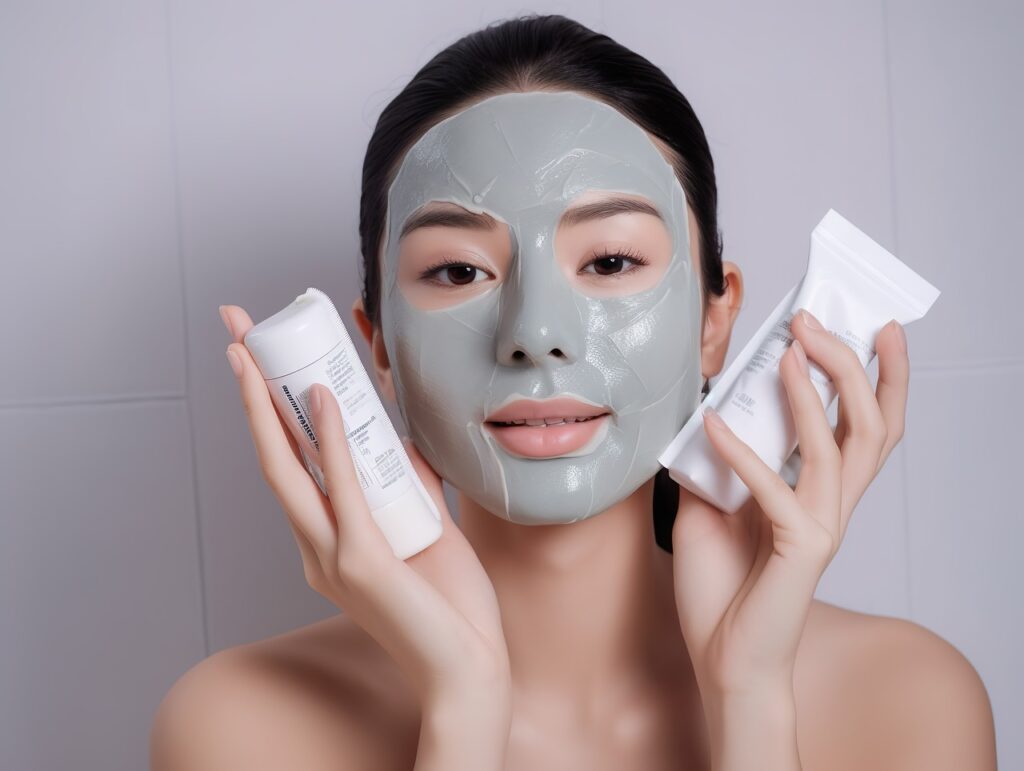
Oil Control: Keeping Sebum in Check
Oily skin can be a major contributor to blemishes. Salicylic acid doesn’t just remove existing blockages; it also helps regulate sebum production. By targeting specific enzymes within the skin, it can help normalize oil flow, reducing the chance of future pore congestion. This two-pronged approach – removing existing blockages and preventing new ones – is what makes salicylic acid so effective for managing blemishes.
Taming the Fury: Reducing Inflammation and Redness
Blemishes aren’t just unsightly; they can be downright angry, often accompanied by redness and inflammation. Salicylic acid goes beyond simple exfoliation and pore-clearing. It possesses anti-inflammatory properties that help soothe and calm irritated skin. By reducing inflammation, salicylic acid can significantly reduce the redness and discomfort associated with blemishes, making them less noticeable and promoting faster healing.
The Overall Effect: Clearer, Calmer Skin
The combined action of exfoliation, oil control, and anti-inflammation makes salicylic acid a powerhouse for blemish-prone skin. It helps:
- Prevent clogged pores and breakouts by removing dead skin cells and regulating sebum production.
- Minimize the appearance of existing blemishes by reducing redness and inflammation.
- Promote faster healing by creating a calmer skin environment.
By incorporating salicylic acid into your skincare routine, you can achieve clearer, smoother, and less irritated skin, leaving you feeling confident and radiant.
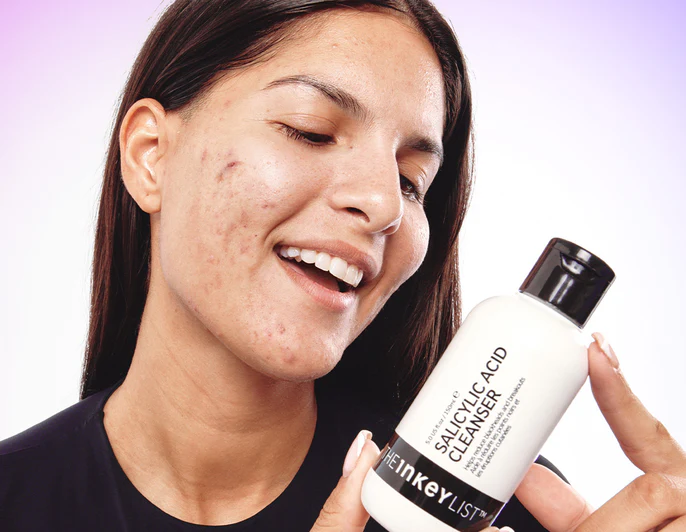
How to use Salicylic acid
As Salicylic acid is an ingredient, not a product, how you use it will depend on the form it’s in. These include…
- Cleanser: Use once or twice a day depending on what your skin can tolerate. Salicylic acid can be irritating around the eyes so avoid this delicate area.
- Toner/Liquid exfoliant: Swipe on with fingers or a cotton pad (depending on how watery the formula is) once or twice a day after cleansing.
- Serum: Smooth onto clean skin. Be wary of layering with other potent actives like alpha-hydroxy acids and retinoids.
- Moisturiser: Apply to clean skin. Again, be mindful of any actives you have already applied in your serum.
- Mask: Use once or twice a week for a deeper action on spots and blemishes. Follow with a moisturiser to rehydrate the skin.
- Spot Treatment: Dot onto clean skin as a targeted treatment and follow with moisturiser.
You could use, say, a Salicylic acid cleanser and toner together, but we wouldn’t recommend including it at every step of your routine. As a general rule, it’s always best to apply Salicylic acid after a shower to avoid accidentally washing any of it off with water or steam.
Salicylic Acid and Daily Use: Finding the Spice Level That Suits Your Skin
Salicylic acid can be a game-changer for oily and blemish-prone skin, but just like spicy food, it’s not a one-size-fits-all solution. Tolerance levels vary greatly, and the key to success lies in finding the frequency that works best for you. Here’s a breakdown to help you navigate daily use of salicylic acid:
Understanding Your Skin’s Tolerance:
- Skin Sensitivity: People with sensitive skin may experience irritation, redness, or dryness with frequent salicylic acid use. It’s best to start slow (a couple of times a week) and gradually increase if tolerated. Patch testing on your inner arm is also recommended before applying to your face.
- Product Strength: The concentration of salicylic acid varies in different products. Cleansers often contain lower percentages (around 0.5-2%) meant for brief contact, while toners and serums may have higher concentrations (up to 4%) for targeted exfoliation. Start with lower strengths and adjust based on your skin’s response.
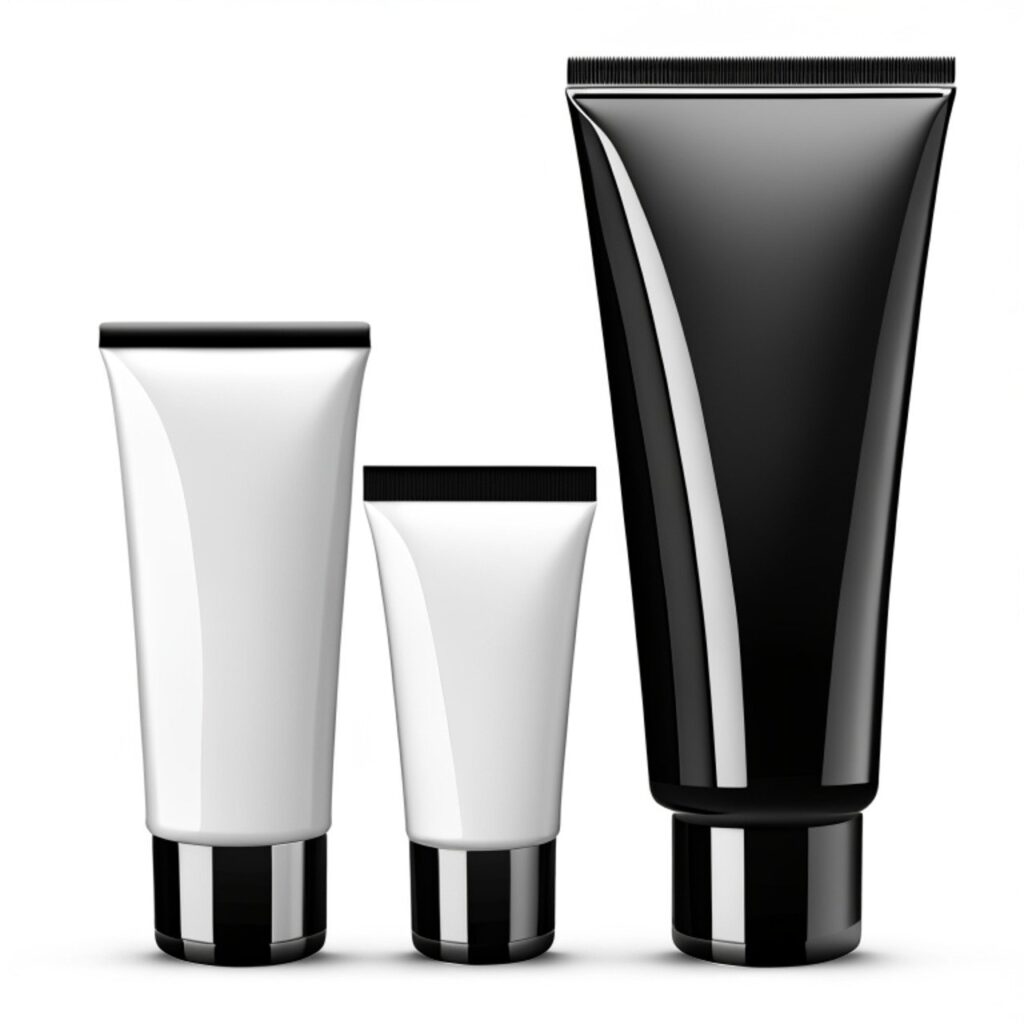
Tailoring Salicylic Acid to Your Routine:
- Cleansers: These are generally formulated for daily use. The short contact time with skin minimizes irritation for most people (except those with very sensitive skin).
- Toners and Serums: These leave-on products require a more cautious approach. Begin with a couple of non-consecutive applications per week and gradually increase frequency as tolerated. Listen to your skin; if you experience dryness, redness, or stinging, scale back.
- Face Masks: Designed for occasional use (once or twice a week) to deliver a more concentrated dose. Follow with a gentle moisturizer to replenish hydration.
Salicylic Acid for Clearer Skin: Remember:
- Introduce Slowly: Always introduce salicylic acid products gradually, even if you have oily skin. This allows your skin to adjust and minimizes the risk of irritation.
- Moisturize: Salicylic acid can be drying, so consistent use of a gentle moisturizer is crucial to maintain a healthy skin barrier.
- Listen to Your Skin: Pay close attention to how your skin reacts. If you experience any discomfort, take a break or reduce frequency.
Finding Your Salicylic Acid “Spice Level”
By experimenting with frequency and product strength, you can find the “spice level” of salicylic acid that works best for your skin. Consistency is key, but don’t push your limits. With a little trial and error, you can harness the power of salicylic acid for a clearer, smoother complexion without irritation.
Is Salicylic acid good for spots?
For all the reasons we’ve already touched on (the ability to balance oil flow, remove old, pore-clogging skin cells and reduce inflammation) Salicylic acid is a great ingredient for the treatment of spots. If you’re struggling to contain blemishes and your skin is acting out, there’s a temptation to throw everything at it all at once. But, it’s simplicity (and consistency) that’s going to tip the scales towards clearer skin.
To support the work of Salicylic acid, bookend its application with a good cleanser and a water-based, non-comedogenic moisturiser
To support the work of Salicylic acid, bookend its application with a good cleanser and a water-based, non-comedogenic moisturiser. If you’ve been wearing makeup or SPF, it’s best to double cleanse your skin at night – once to whisk away surface-level grime, and second to really get into your pores. In the morning, cleansing once is enough.
Salicylic Acid and the Purging Phenomenon: Unveiling the Mystery Breakouts
Salicylic acid is a hero for oily and blemish-prone skin, but sometimes, its initial effects can be a bit confusing. You might see an increase in breakouts, leading you to wonder – is salicylic acid making my acne worse, or is something else going on?
The answer lies in a process called purging. Here’s a breakdown to help you understand what’s happening:
What is Purging?
Purging is a temporary increase in breakouts that can occur when you first start using salicylic acid. This happens because salicylic acid accelerates cell turnover, pushing trapped dead skin cells and existing blemishes towards the surface of the skin faster. These blemishes were already there, lurking beneath the surface, but salicylic acid brings them to the forefront for a quicker eviction.
Why Does Purging Happen?
Think of your pores as tiny apartments. Dead skin cells and sebum are the unwanted tenants. Normally, these tenants are evicted slowly, leading to a gradual build-up and occasional breakouts. However, salicylic acid acts like a super-efficient landlord, kicking out all the unwanted tenants quickly. This eviction process can lead to a temporary surge in visible blemishes.
How to Tell if it’s Purging vs. Irritation:
Purging typically occurs within the first few weeks of using salicylic acid. The breakouts are often small, whiteheads or blackheads, and tend to appear in areas prone to breakouts. On the other hand, irritation breakouts can be red, inflamed, and appear anywhere on your face. Additionally, irritation might be accompanied by dryness, stinging, or a burning sensation.
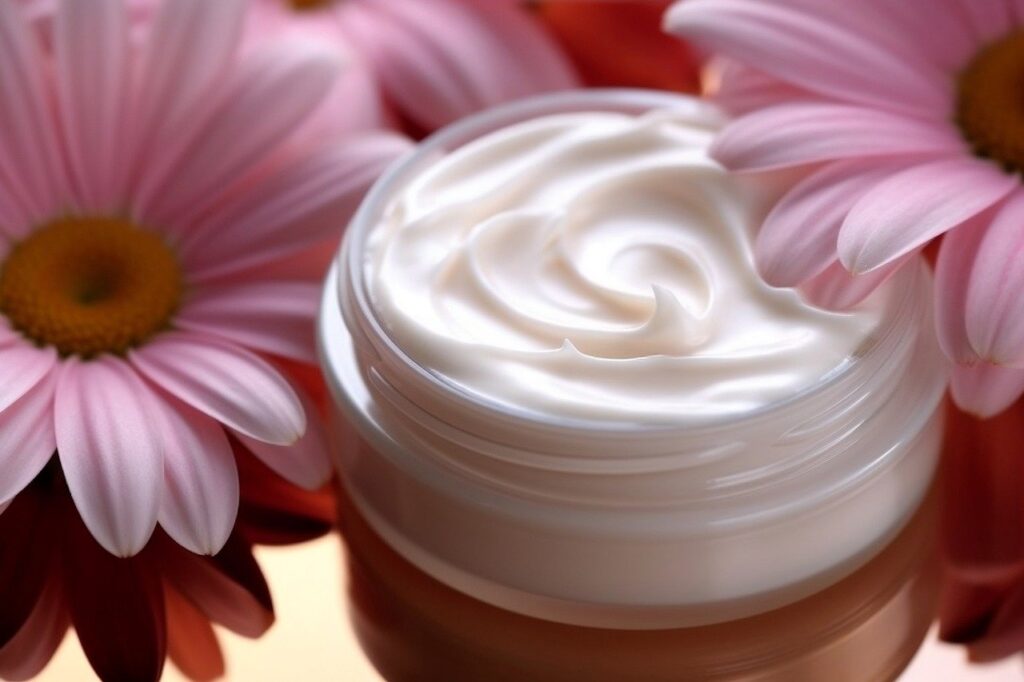
How to Manage Purging:
- Don’t Panic: Purging is a sign that the product is working!
- Be Patient: Stick with your routine for at least 6-8 weeks to allow purging to subside and see the full benefits of salicylic acid.
- Moisturize: Salicylic acid can be drying, so consistent use of a gentle moisturizer is crucial to soothe irritation and maintain a healthy skin barrier.
- Simplify: Avoid using other harsh exfoliating products or introducing new skincare ingredients during the purging phase.
Salicylic Acid for Clearer Skin: Important Considerations:
- While purging is common with salicylic acid, a significant increase in breakouts could indicate irritation. If you experience severe redness, burning, or excessive dryness, reduce frequency or stop using the product and consult a dermatologist.
- External factors like stress, diet, and hormones can also influence breakouts. If you notice new blemishes, consider these factors alongside your skincare routine.
By understanding purging and managing it effectively, you can harness the power of salicylic acid for long-term clearer, smoother skin. Remember, a little short-term “eviction party” can lead to a long-term decrease in unwanted tenants (blemishes) in your skin’s apartments (pores).
Salicylic Acid and Retinol: The Power Couple (But Proceed with Caution)
Salicylic acid and retinol are two powerhouse ingredients in the world of skincare, particularly for those concerned with blemishes and signs of aging. But can you use them together? The answer is yes, but with a healthy dose of caution and strategic application.
Understanding the Benefits of the Duo:
- Salicylic Acid: This BHA (beta hydroxy acid) is a champion for oily and blemish-prone skin. It exfoliates by dissolving dead skin cells and sebum buildup within pores, preventing future breakouts.
- Retinol: A superstar retinoid, retinol works its magic by accelerating cell turnover, stimulating collagen production, and minimizing the appearance of fine lines and wrinkles.
The Synergy of Salicylic Acid and Retinol:
When used strategically, salicylic acid and retinol can offer a one-two punch for a clearer, younger-looking complexion:
- Enhanced Penetration: Salicylic acid’s oil-solubility allows it to clear the way for retinol to penetrate deeper into the skin. This can maximize the effectiveness of retinol in targeting wrinkles and boosting collagen production.
- Double Exfoliation Power: Both ingredients work to remove dead skin cells, promoting a smoother, brighter complexion. Salicylic acid tackles surface buildup, while retinol works deeper within the skin’s layers.

Salicylic Acid for Clearer Skin: Why Caution is Key:
Both salicylic acid and retinol are potent actives, and using them together can increase the risk of irritation, dryness, and redness, especially for those with sensitive skin. Here’s why taking a cautious approach is crucial:
- Potential Irritation: Overdoing it with these actives can disrupt the skin barrier, leading to discomfort and inflammation.
- Increased Sun Sensitivity: Both ingredients can make your skin more sensitive to the sun. Consistent use of SPF 30 or higher is essential.
Strategies for Combining Salicylic Acid and Retinol:
If you want to reap the benefits of both ingredients, consider these strategies:
- Start Slow: Introduce each product gradually, starting with once or twice a week on alternate nights. Monitor your skin’s response and increase frequency as tolerated.
- Buffering: Apply a moisturizer before using retinol to create a barrier and minimize irritation.
- Targeted Application: Use salicylic acid only on blemish-prone areas and retinol on your entire face (avoiding the delicate eye area).
- Nighttime Use: Both ingredients can increase sun sensitivity, so nighttime application is recommended.
Alternative Approaches:
If your skin is sensitive or easily irritated, consider alternative approaches:
- Separate Days: Use salicylic acid on a few days and retinol on others to allow your skin to recover between applications.
- Look for Formulations: Some skincare products combine salicylic acid and retinol in a gentler formulation specifically designed for combined use. Consult a dermatologist for recommendations.
Remember:
Listen to your skin. If you experience any discomfort, reduce frequency or stop using the products altogether. Consulting a dermatologist can help you create a personalized strategy for maximizing the benefits of salicylic acid and retinol while minimizing irritation.
Can you use Salicylic acid with Hyaluronic acid?
Hyaluronic acid is acid in name, but not so much in nature, so won’t exfoliate the skin like Salicylic acid will. Instead, it’s the skincare equivalent of a nice big glass of water. It’s a humectant, which means it draws in moisture from the atmosphere and holds it in the skin. As it’s not competing with Salicylic acid in terms of function and is suitable for even sensitive skin, you can certainly use Salicylic and hyaluronic acid together. In fact, we’d recommend that you do.
There’s a lot of confusion around the difference between dry and dehydrated skin which causes people with oily skin to steer clear of hydrating ingredients like hyaluronic acid. Dry is when skin is lacking in oil, and dehydrated is when skin is lacking in water, so skin can be both oily and dehydrated all at once. Topping up those much-needed water levels will help oily skin to function at its best, and stop it from overcompensating by making yet more oil. Also it will help hyaluronic acid to penetrate the skin more effectively.
Salicylic Acid and Hyaluronic Acid: The Dream Team for Oily Skin
Salicylic acid and hyaluronic acid might seem like opposites in the skincare world, but when combined strategically, they can be a dream team for oily and blemish-prone skin. Here’s why:
Understanding the Power Players:
- Salicylic Acid (BHA): This oil-soluble hero dives deep into pores, dissolving dead skin cells and sebum buildup, preventing future breakouts and minimizing existing blemishes.
- Hyaluronic Acid (Hyaluronate): This humectant acts like a moisture magnet, drawing water from the environment and holding it within the skin. Contrary to popular belief, even oily skin can be dehydrated, leading to increased oil production to compensate for the lack of water.
Why They Work So Well Together:
While salicylic acid tackles blemishes, hyaluronic acid addresses a key underlying concern for oily skin – dehydration. Here’s how they create a winning combination:
- Balanced Hydration: Hyaluronic acid replenishes moisture levels, preventing the skin from overproducing oil to compensate for dryness. This reduces shine and creates a smoother appearance.
- Enhanced Exfoliation: Salicylic acid can be slightly drying, especially at higher concentrations. Hyaluronic acid counteracts this by providing much-needed hydration, ensuring the exfoliation process doesn’t disrupt the skin barrier.
- Improved Penetration: Hyaluronic acid can actually help salicylic acid penetrate deeper into the pores. This allows salicylic acid to work more effectively in clearing congestion and preventing breakouts.

Salicylic Acid for Clearer Skin: Debunking the Dehydration Myth:
Oily skin doesn’t necessarily mean well-hydrated skin. In fact, many people with oily skin experience dehydration, which can lead to increased oil production as a compensatory mechanism. Hyaluronic acid addresses this by replenishing moisture, promoting a more balanced oil flow.
Using Salicylic Acid and Hyaluronic Acid Together:
Here are some tips to maximize the benefits of this powerful duo:
- Layering: Apply hyaluronic acid first to a damp face to enhance its water-binding properties. Then, follow with salicylic acid to ensure it reaches its target.
- Moisturizer: Don’t skip the moisturizer! Even with hyaluronic acid, using a lightweight moisturizer suitable for oily skin is crucial to maintain a healthy skin barrier.
- Start Slow: Introduce each product gradually, starting with a couple of times per week on alternate nights. This allows your skin to adjust and minimizes the risk of irritation.
Salicylic Acid for Clearer Skin: Remember:
Everyone’s skin is different. If you experience any discomfort, adjust the frequency of use or consult a dermatologist for personalized recommendations.
By combining the power of salicylic acid for blemish control with the hydrating benefits of hyaluronic acid, you can achieve a clearer, smoother, and more balanced complexion, even with oily skin.
Salicylic Acid and Niacinamide: The Power Duo for Blemish-Prone Skin
Salicylic acid and niacinamide are two superstar ingredients in the world of skincare, particularly for those struggling with oily, blemish-prone skin. But what makes them such a perfect match? Let’s delve deeper into why they work wonders when used together.
Understanding the All-Stars:
- Salicylic Acid (BHA): This oil-soluble hero dives deep into pores, dissolving dead skin cells and sebum buildup. This prevents future breakouts and minimizes existing blemishes by keeping the pores clear.
- Niacinamide (Vitamin B3): This multi-tasking vitamin offers a range of benefits for oily skin:
- Oil Control: Niacinamide helps regulate sebum production, leading to less oily skin and a reduction in shine.
- Anti-inflammatory: Niacinamide soothes redness and irritation associated with blemishes, calming angry breakouts.
- Skin Barrier Repair: It strengthens the skin’s barrier, making it less susceptible to environmental damage and irritation.
Why They’re a Dream Team:
Salicylic acid and niacinamide tackle different aspects of blemish-prone skin, creating a synergistic effect:
- Double Trouble for Breakouts: Salicylic acid exfoliates and decongests pores, while niacinamide reduces oil production and soothes inflammation. This two-pronged attack helps prevent future breakouts and minimize the appearance of existing ones.
- Balanced Approach: Salicylic acid can be slightly drying, especially at higher concentrations. Niacinamide helps counteract this by promoting a healthy skin barrier and reducing inflammation.
- Stronger Together: Studies suggest that combining salicylic acid and niacinamide may be more effective in managing acne than using either ingredient alone.
How to Use Salicylic Acid and Niacinamide Together:
There are two main ways to incorporate this powerful duo into your routine:
- Combined Products: Look for skincare products that contain both salicylic acid and niacinamide in a single formulation. This ensures they work together seamlessly.
- Layering: Apply salicylic acid first to a cleansed face, followed by niacinamide. This allows the salicylic acid to clear the pores, paving the way for niacinamide to deliver its soothing and balancing benefits.
Salicylic Acid for Clearer Skin: Important Considerations:
- Start Slow: Although generally well-tolerated, it’s wise to introduce each product gradually, starting with a couple of times per week. Monitor your skin’s response and adjust frequency as needed.
- Listen to Your Skin: If you experience any irritation, take a break or adjust the frequency of use. Consult a dermatologist if irritation persists.
- Moisturize: Don’t forget a lightweight, oil-free moisturizer to maintain a healthy skin barrier, even with oily skin.
By combining the power of salicylic acid for pore clearing and niacinamide for oil control and soothing, you can achieve a clearer, calmer, and more balanced complexion. This dynamic duo is a winning strategy for anyone battling blemishes and seeking a smoother, healthier-looking visage.

Salicylic Acid and Vitamin C: A Powerful Duo, But With Nuances
Salicylic acid and vitamin C are two powerhouse ingredients in the skincare world, both offering benefits for blemish-prone and acne-prone skin. But can you use them together? The answer is yes, but with a strategic approach to maximize their benefits and minimize irritation.
Understanding the All-Stars:
- Salicylic Acid (BHA): This oil-soluble hero dives deep into pores, dissolving dead skin cells and sebum buildup. This prevents future breakouts and minimizes existing blemishes by keeping the pores clear.
- Vitamin C: This antioxidant vitamin offers a range of benefits:
- Antioxidant Protection: Vitamin C shields the skin from free radicals caused by pollution and stress, which can contribute to breakouts.
- Brightening Power: It helps fade dark spots left behind by acne, promoting a more even skin tone.
- Collagen Production: Vitamin C stimulates collagen production, leading to firmer, younger-looking skin.
Why They Can Be a Team:
Salicylic acid and vitamin C address different aspects of blemish-prone skin, creating a synergistic effect when used strategically:
- Double Whammy on Breakouts: Salicylic acid clears pores, while vitamin C reduces future breakouts by fighting free radicals.
- Fading Dark Spots: Vitamin C tackles hyperpigmentation left behind by blemishes, while salicylic acid keeps pores clear to prevent new marks.
- Overall Brighter Complexion: Vitamin C’s brightening properties and salicylic acid’s pore-clearing action work together to promote a more even and radiant skin tone.
Optimizing Use for Best Results:
Here’s how to leverage the benefits of both ingredients without compromising your skin’s health:
- Layering is Key: Apply salicylic acid first in your morning or evening routine (depending on your preference) to cleanse pores. Follow with vitamin C to reap its antioxidant and brightening benefits.
- pH Matters: Salicylic acid is most effective at a lower pH, while vitamin C prefers a slightly acidic to neutral environment. Look for formulations with compatible pH levels to ensure optimal performance of both ingredients.
- Consider Separate Routines: If your skin is sensitive, using them in separate routines might be best. Vitamin C in the morning for its antioxidant shield and salicylic acid at night for targeted blemish control.
- Start Slow: Introduce each product gradually, starting with a couple of times per week and monitor your skin’s response. Ease into more frequent use if tolerated.
Salicylic Acid for Clearer Skin: Important Considerations:
- Sensitivity: Both ingredients can be potentially irritating, especially for sensitive skin. Start slow, patch test, and listen to your skin.
- Sun Protection: Vitamin C increases sun sensitivity. Always use a broad-spectrum SPF 30 or higher, especially when using vitamin C in the morning.
- Moisturize: Don’t skip the moisturizer! Even oily skin needs hydration to maintain a healthy barrier. Use a lightweight, oil-free moisturizer after applying these active ingredients.
By understanding the strengths of salicylic acid and vitamin C, and using them strategically, you can create a powerful skincare routine that tackles blemishes, brightens dark spots, and promotes a more radiant complexion. Remember, consistency is key, and don’t hesitate to consult a dermatologist if you have any concerns or experience irritation.
Salicylic Acid and Glycolic Acid: Powerhouse Pair or Potential Pitfall?
Salicylic acid and glycolic acid are both heavyweight contenders in the skincare world, particularly for those concerned with blemishes and uneven texture. But with both being AHAs (alpha hydroxy acids) and BHAs (beta hydroxy acids), you might wonder: can you use them together? The answer is yes, but with caution and a strategic approach.
Understanding the Exfoliating Duo:
- Salicylic Acid (BHA): This oil-soluble hero dives deep into pores, dissolving dead skin cells and sebum buildup. It excels at tackling blemishes and preventing future breakouts.
- Glycolic Acid (AHA): This water-soluble workhorse works on the skin’s surface, gently dissolving the “glue” that holds dead skin cells together. This promotes cell turnover, revealing a brighter, smoother complexion. It also helps reduce the appearance of fine lines and hyperpigmentation.
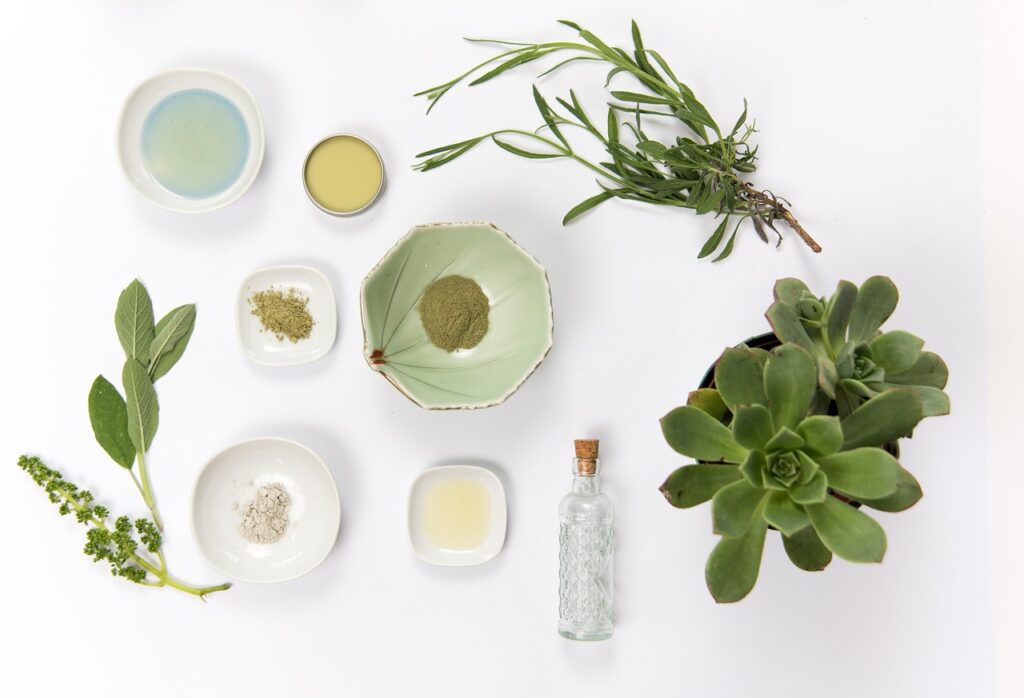
Why They Can Be a Team:
When used strategically, salicylic acid and glycolic acid can offer a multi-pronged approach to a clearer, smoother complexion:
- Double Exfoliation Power: Salicylic acid tackles deep pore congestion, while glycolic acid buffs away dead skin cells on the surface. This combined action can lead to a more visibly refined and radiant complexion.
- Addressing Different Concerns: Salicylic acid specifically targets blemishes, while glycolic acid focuses on overall texture and tone. By using both, you can address a wider range of concerns.
- Enhanced Penetration: Glycolic acid’s smaller molecule size can potentially help salicylic acid penetrate deeper, making it more effective.
The Balancing Act: Why Caution is Key
While both ingredients offer benefits, their potent exfoliating nature can be a double-edged sword:
- Increased Irritation: Overdoing it with these actives can disrupt the skin barrier, leading to dryness, redness, and stinging.
- Sun Sensitivity: Both AHAs and BHAs can make your skin more sensitive to the sun. Consistent use of SPF 30 or higher is crucial.
How to Use Salicylic Acid and Glycolic Acid Together (Safely):
If you want to reap the benefits of both ingredients, consider these strategies:
- Start Slow: Introduce each product gradually, starting with once a week on alternate nights. Monitor your skin’s response and increase frequency very cautiously, if tolerated.
- Buffering: Apply a moisturizer before using either AHA or BHA to create a barrier and minimize irritation.
- Targeted Application: Use salicylic acid only on blemish-prone areas and glycolic acid on your entire face (avoiding the delicate eye area).
- Separate Routines: If your skin is sensitive, consider using them in separate routines. Perhaps glycolic acid in the morning for a brighter complexion and salicylic acid at night for targeted blemish control.
- Low-Strength Combinations: Look for products that combine AHAs and BHAs in lower concentrations, specifically formulated for combined use. Consult a dermatologist for recommendations.
Remember:
Listen to your skin. If you experience any discomfort, reduce frequency, stop using the products altogether, or consult a dermatologist.
Salicylic Acid for Clearer Skin: The Takeaway:
Salicylic acid and glycolic acid can be a powerful team for achieving a clearer, smoother complexion. However, a cautious approach is essential to avoid irritation. By following these guidelines and prioritizing your skin’s health, you can potentially unlock the benefits of both these powerhouse ingredients. Remember, consistency is key, and don’t hesitate to consult a dermatologist for a personalized plan to achieve your skincare goals.
Unveiling the Timeline: How Long Does Salicylic Acid Take to Work?
Salicylic acid is a hero ingredient for oily and blemish-prone skin, but waiting for results can feel like an eternity. Here’s a breakdown to shed light on the timeline and what to expect:
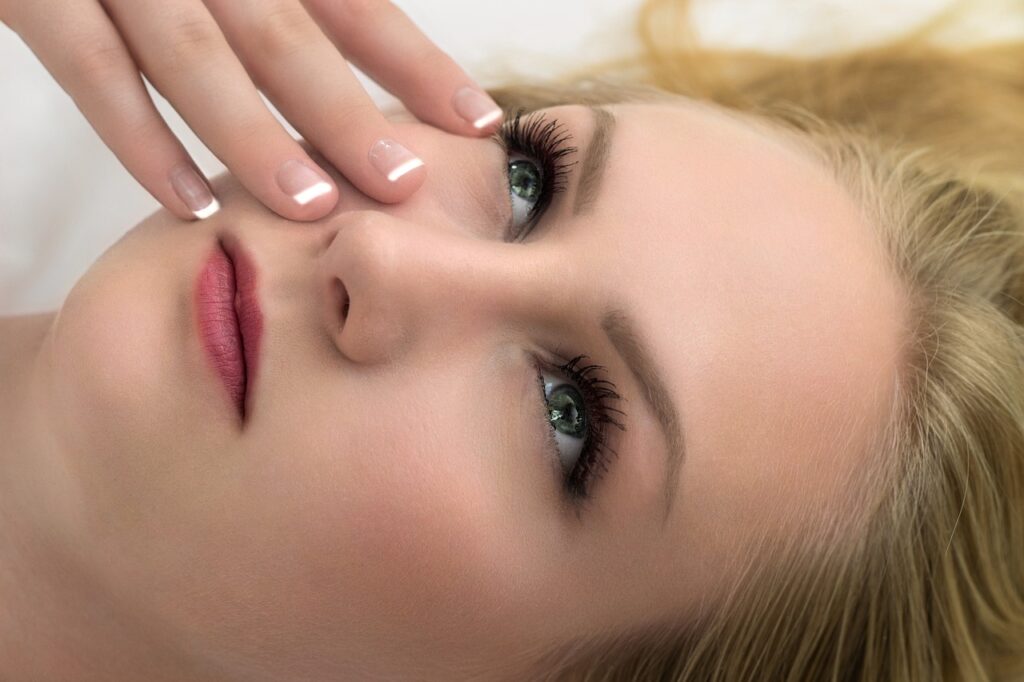
Salicylic Acid for Clearer Skin: Understanding Skin Cell Turnover:
Our skin is a constantly renewing canvas. New skin cells form deep within and gradually migrate upwards, replacing older cells on the surface. This process, called skin cell turnover, plays a crucial role in maintaining a healthy, radiant complexion. The average skin cell turnover rate varies based on age:
- 20s: Around 21 days
- 30s & 40s: Around 28 days
- 50s & beyond: Around 45 days
Salicylic Acid’s Impact:
Salicylic acid works by accelerating skin cell turnover. It does this by:
- Exfoliating: It loosens and removes dead skin cells that can clog pores and contribute to breakouts.
- Penetrating Pores: It dives deep into pores, dissolving sebum (oil) and preventing future blockages.
The Wait for Results:
So, how long does it take to see results from salicylic acid? Here’s the key point:
- It takes at least a couple of full skin cell turnover cycles (around 4-8 weeks) to see the full benefits of salicylic acid. This allows the new, unclogged pores and healthier cells to reach the surface.
Why Patience is Key:
While the wait might seem long, here’s why patience is crucial:
- Gradual Improvement: Skin cell turnover is a natural process, and salicylic acid accelerates it in a controlled manner. Dramatic changes overnight are unrealistic and potentially damaging.
- Underlying Issues: Sometimes, breakouts can have deeper causes like hormonal fluctuations or diet. Salicylic acid might need time to address the root cause along with surface issues.
- Purging: In some cases, you might experience an initial increase in breakouts as salicylic acid brings existing blemishes to the surface faster. This is temporary (usually within a few weeks) and indicates the product is working.
Salicylic Acid for Clearer Skin: Early Signs of Success:
While it takes a couple of cycles for complete results, you might see some positive changes sooner:
- Faster Fading: Existing blemishes might start to fade a little quicker as salicylic acid helps clear the congestion.
- Reduced Inflammation: Inflammation associated with active breakouts might lessen.
- Smoother Texture: With dead skin cells removed, your skin might feel smoother even before significant reduction in breakouts.
Salicylic Acid for Clearer Skin: Maximizing Results:
Here are some tips to get the most out of salicylic acid:
- Start Slow: Begin with a low concentration and use it a few times per week, gradually increasing frequency as tolerated.
- Moisturize: Salicylic acid can be drying, so consistent use of a gentle moisturizer is essential.
- Sunscreen: Salicylic acid can make your skin more sensitive to the sun. Use SPF 30 or higher daily.
- Listen to Your Skin: If you experience excessive irritation, reduce frequency or stop using the product altogether.
Remember: Consistency is key. By being patient and using salicylic acid correctly, you can achieve a clearer, smoother, and healthier complexion. If you have any concerns or don’t see improvement after 8 weeks, consult a dermatologist for personalized advice.
Explore more articles like this @ Where And How Resources
If you found this article helpful, don’t forget to share it with your friends and followers!